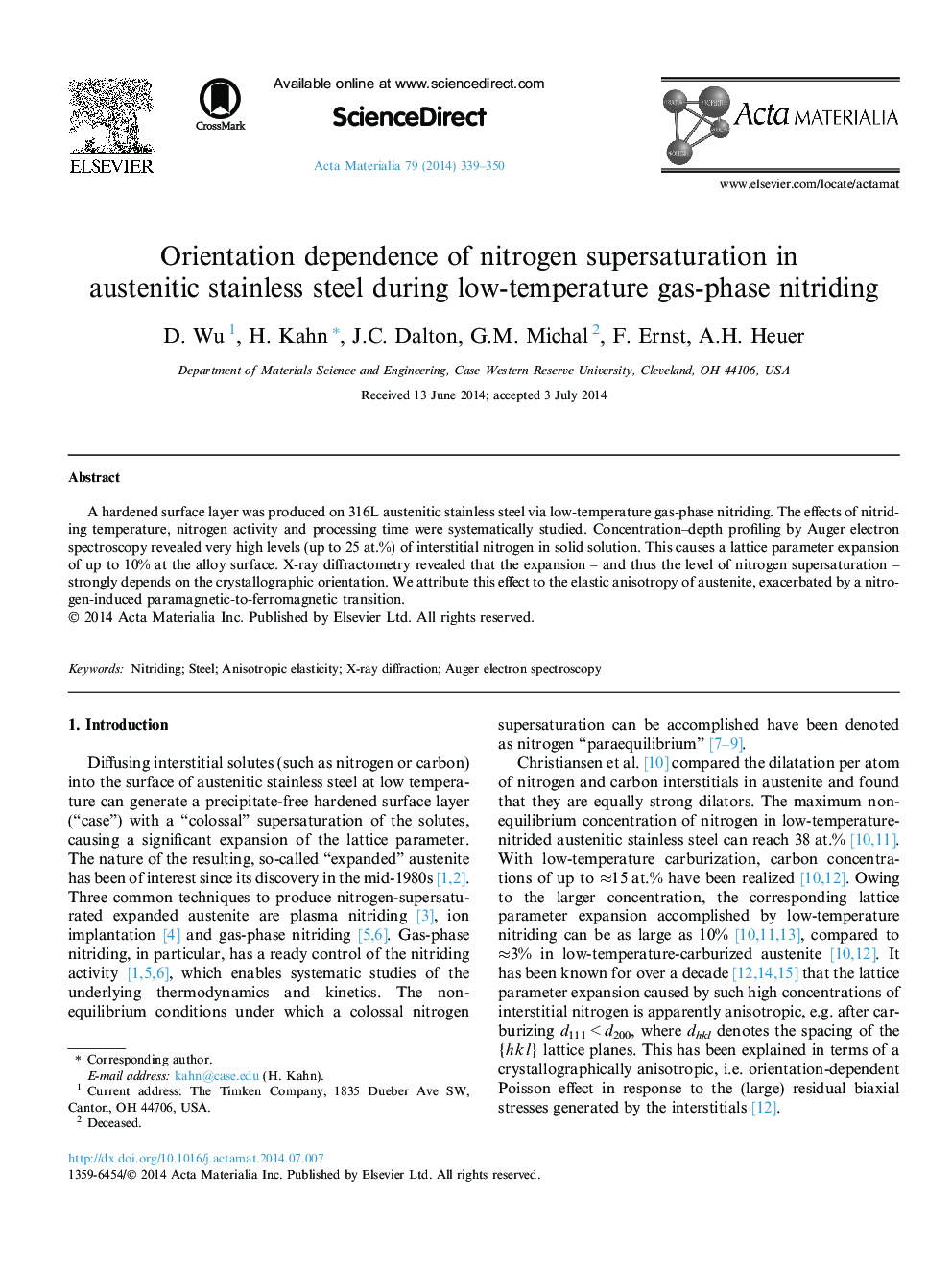| Article ID | Journal | Published Year | Pages | File Type |
|---|---|---|---|---|
| 7881213 | Acta Materialia | 2014 | 12 Pages |
Abstract
A hardened surface layer was produced on 316L austenitic stainless steel via low-temperature gas-phase nitriding. The effects of nitriding temperature, nitrogen activity and processing time were systematically studied. Concentration-depth profiling by Auger electron spectroscopy revealed very high levels (up to 25Â at.%) of interstitial nitrogen in solid solution. This causes a lattice parameter expansion of up to 10% at the alloy surface. X-ray diffractometry revealed that the expansion - and thus the level of nitrogen supersaturation - strongly depends on the crystallographic orientation. We attribute this effect to the elastic anisotropy of austenite, exacerbated by a nitrogen-induced paramagnetic-to-ferromagnetic transition.
Related Topics
Physical Sciences and Engineering
Materials Science
Ceramics and Composites
Authors
D. Wu, H. Kahn, J.C. Dalton, G.M. Michal, F. Ernst, A.H. Heuer,
